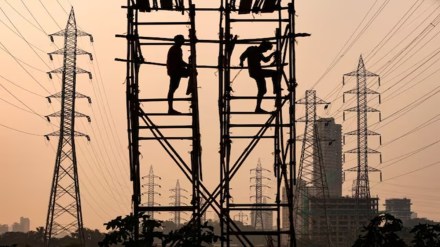The financial health and operational performance of state-owned power distribution companies (discoms) remain under pressure due to a combination of factors including inadequate tariff hikes, high AT&C losses, mounting regulatory assets (RA) and large debt position, according to a new report.
As per Icra’s estimate and based on the tariff orders issued by the state electricity regulatory commissions (SERCs), the RA position at all-India level remains elevated at around Rs. 3 lakh crore, mainly driven by the discoms of Tamil Nadu, Uttar Pradesh, Rajasthan, Maharashtra, Delhi, West Bengal and Karnataka, with the first three states accounting for the bulk of the share.
Regulatory assets is the unrecoverable revenue gap due to the difference between the Average Cost of Supply (ACS), which is the expense incurred by a discom to deliver a unit of electricity to consumers, and the Annual Revenue Requirement (ARR), which is the revenue collected by the discom as consumer tariffs and subsidy payments from the government.
Supreme Court directive and tariff hike challenge
The Supreme Court recently issued an order on the petitions filed by discoms and regulatory commission in Delhi with respect to the build-up of RAs for Delhi discoms, citing a systemic regulatory failure in the governance of tariff determination and management of RAs.
As part of this order, the SC has issued broader directions to all SERCs, mandating liquidation of legacy RAs within four years and capped the creation of new RAs at 3% of the Annual Revenue Requirement (ARR). The SC directed the Appellate Tribunal for Electricity (APTEL) to monitor the implementation and enforce accountability on the creation and liquidation of RAs. However, the implementation by state discoms remains to be seen.
“Complying with the SC directive would thus necessitate steep tariff hikes across these states, which would in turn require state government support for effective implementation. Apart from improvement in operating efficiencies, regulatory reforms to ensure timely issuance of tariff orders with cost reflective tariffs remain critical to achieve a sustainable improvement in discom finances going forward,” said Girishkumar Kadam, Senior Vice President & Group Head – Corporate Ratings, ICRA.
The agency estimates an all-India average tariff hike of 4.5% along with a reduction in aggregate technical and commercial (AT&C) losses below 15% to eliminate the all-India average cost of supply (ACS) – average revenue realisation (ARR) gap with the tariff hike required varying widely across the states.
Sustained improvement in AT&C losses, timely pass-through of cost variations through tariffs, and timely liquidation of past RAs are essential for financial turnaround of state discoms, Icra said.
“The implementation of the Fuel and Power Purchase Adjustment Surcharge (FPPAS) mechanism remains important to ensure the timely pass-through of PPC (power purchase cost) variation to the consumers. However, this remains patchy, with only a few states operationalising the mechanism fully despite its notification in December 2022,” Kadam said.
The tariff orders for FY26 have been issued in 23 out of 28 states as of August 2025, indicating a moderate progress as these should have been issued by March 2025 for all states.
Moreover, the median tariff hike at the all-India level remains modest at 1.9% in FY26, lower than the 2.1% in FY25, reflecting continued reluctance to align tariffs with the cost of supply, wherein the power purchase cost (PPC) remains the major contributor, Icra noted.
The rationalisation of GST rates on coal from 5% to 18% and removal of compensation cess of Rs. 400 per ton, is expected to reduce the cost of generation for coal-based power generators.
This move is expected to further benefit the discoms, as it is likely to translate into a reduction of around 12 paise per unit in their cost of supply as coal-based capacity accounts for over 70% of total generation at an all-India level.
Rising debt and subsidy dependence
The gross debt position for state owned discoms at the all India level rose to Rs. 7.4 trillion as of March 2024, up from Rs. 6.6 trillion a year earlier, reflecting continued reliance on borrowings.
“Such high debt levels are unsustainable for discoms, given their current revenues and profitability, thereby necessitating support from state governments. Subsidy dependence is projected to rise to Rs. 2.2 trillion in FY26, up from Rs. 2.1 trillion in FY25, driven by higher ACS and new subsidy schemes in certain states,” Icra said.
Apart from the large subsidy dependence, discoms also receive loss funding support from the state governments putting fiscal pressure on the state finances. Improved operating efficiency and implementation of regulatory reforms remain critical to address discom financial stress, said Icra.
Regulatory assets arise when SERCs recognizs that the existing consumer tariffs are insufficient to fully recover the power purchase costs incurred by discoms. Instead of implementing an immediate tariff hike—often due to political or state government pressures—SERCs allow discoms to account for the shortfall between the purchase cost and revenue generated from power sales at the existing tariffs as future recoverable dues. These unrecovered costs are recorded as RAs.
